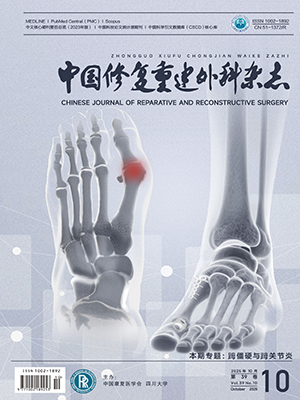| 1. |
Wong JM, Bucknill A. Fractures of the pelvic ring. Injury, 2017, 48(4): 795-802.
|
| 2. |
Pohlemann T, Stengel D, Tosounidis G, et al. Survival trends and predictors of mortality in severe pelvic trauma: estimates from the German Pelvic Trauma Registry Initiative. Injury, 2011, 42(10): 997-1002.
|
| 3. |
Balogh Z, King KL, Mackay P, et al. The epidemiology of pelvic ring fractures: a population-based study. J Trauma, 2007, 63(5): 1066-1073.
|
| 4. |
Yoshihara H, Yoneoka D. Demographic epidemiology of unstable pelvic fracture in the United States from 2000 to 2009: trends and in-hospital mortality. J Trauma Acute Care Surg, 2014, 76(2): 380-385.
|
| 5. |
陈惟昌, 陈志华, 赵天德, 等. 可视化人体的整体坐标系统. Ct 理论与应用研究, 2004, 13(1): 1-6.0.
|
| 6. |
徐青镭, 倪卫明, 万年宇. 人体髋关节周围肌肉三维生物力学模型的建立与应用. 伤残医学杂志, 2003, 11(3): 13-14.0.
|
| 7. |
Zheng G. Assessing the accuracy factors in the determination of postoperative acetabular cup orientation using hybrid 2D-3D registration. J Digit Imaging, 2010, 23(6): 769-779.
|
| 8. |
Borhani M, Mcgregor AH, Bull AM. An alternative technical marker set for the pelvis is more repeatable than the standard pelvic marker set. Gait Posture, 2013, 38(4): 1032-1037.
|
| 9. |
高金华, 郭晓山, 梁清宇, 等. 基于 X 线片与 CT 的不稳定型骨盆骨折 3D 分型研究. 中华创伤骨科杂志, 2013, 15(11): 961-966.0.
|
| 10. |
石成弟, 胡炜, 余可和, 等. 不稳定型骨盆骨折三维空间移位的 X 线诊断方法及其在闭合复位术中的初步应用. 中华创伤杂志, 2013, 29(8): 717-722.0.
|




